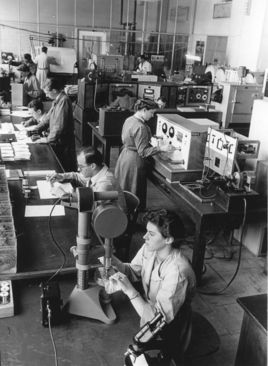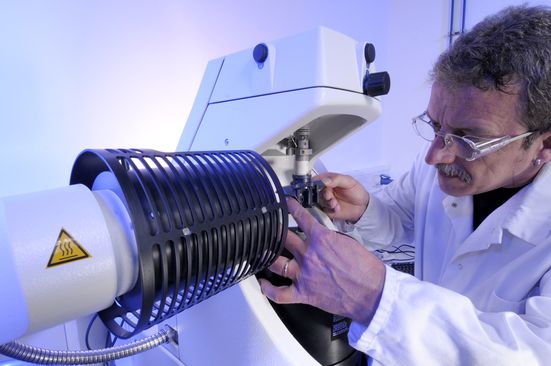Asia
EMEA

LANXESS Canada Contacts
Contact our Sites in Canada
Media Inquiries
General Inquiries
Please click here to e-mail LANXESS Canada with product inquiries and general requests.
Global Press Releases
2011-08-03
One hundred years of the synthetic rubber testing center
High-end material under the microscope
What would synthetic rubbers be without experienced application technicians? The development of the new polymer family into a mature material began in mid-1911, i.e. one hundred years ago, with the establishment of the first synthetic rubber testing laboratory at the birthplace of modern high-performance rubber, Farbenfabriken vorm. Friedrich Bayer & Co. Wuppertal -Elberfeld, Germany. Later it was relocated to Leverkusen and is now a modern service facility where elastomer experts develop top rubber blends for customers around the world active in all areas of the rubber industry. A link was recently established between this institution and its counterpart in Qingdao, China, enabling LANXESS synthetic rubber experts to further shorten the time to market for their partners in the rubber industry.
And therefore the laboratory made an important step for the future. “We have established a link with our second testing center in Qingdao and our technical service centers all over the world,” said Professor Claus Wrana, head of Polymer Testing at LANXESS since 2008. “As a result, we and our application engineers now have virtually instant access to all measurement and analysis results.” This means a further reduction in the time customers have to wait to find out whether or not their blend ideas have been successful. “Before, you had to wait for the final result. Now, under certain circumstances, you can tell from the temperature of the kneader whether the blend works or not and quickly take action and make adjustments if need be. This therefore cuts development times significantly.”
One man’s name is closely associated with the foundation of the first “rubber testing center” in Elberfeld – Dr. Kurt Gottlob. Born in 1881, Gottlob had already developed a process for obtaining what was to become a key basic material for synthetic rubber – isoprene – from natural sources such as turpentine oil and had even attempted to produce synthetic rubbers himself. Although Fritz Hofmann beat him to the punch in achieving this milestone, his work naturally made him an ideal colleague for the inventor of synthetic rubber.
Immediately after joining the company, Gottlob set up a rubber testing center to examine the vulcanization properties of the material samples produced by Fritz Hofmann and his team. He discovered that Hofmann’s methyl rubber absorbed less sulfur than natural rubber and vulcanized better in the presence of organic bases – and he is credited with the invention of the first vulcanization accelerator.
From 1916, Gottlob’s work gradually moved away from research into basic rubber towards application technology as we know it today. During this time, Gottlob devised instructions and blend formulas to turn the new methyl rubber into useable technical rubber products, such as balloon materials, solid rubber tires and hard rubber for the rubber industry.
Kurt Gottlob died in 1925 at the age of 44. However, his work lives on to this day. At times, more than 400 people worked in the testing laboratories on the first floor of the Leverkusen chemical park’s famous K10 “Rubber House”, testing new rubber samples from the reactors of the large German synthetic rubber manufacturer.
A vast amount of expertise has been built up over the decades. “Today, we have a portfolio of around 100,000 rubber formulations that can be used for applications of potentially unparalleled diversity,” said Wrana. “We produce an average of 800 rubber blends a month and obtain a wealth of data on these.” Wrana and his team offer around 400 different tests. In doing so, these experts can make use of a state-of-the-art machine park – from kneaders to elaborate testing assemblies used to predict complex end properties, such as the rolling resistance of a tire tread.
The latest news from LANXESS direct to your mobile phone: mobile.lanxess.com
LANXESS is a leading specialty chemicals company with sales of EUR 7.1 billion in 2010 and currently around 15,500 employees in 30 countries. The company is at present represented at 46 production sites worldwide. The core business of LANXESS is the development, manufacturing and marketing of plastics, rubber, intermediates and specialty chemicals.
- Gallery






